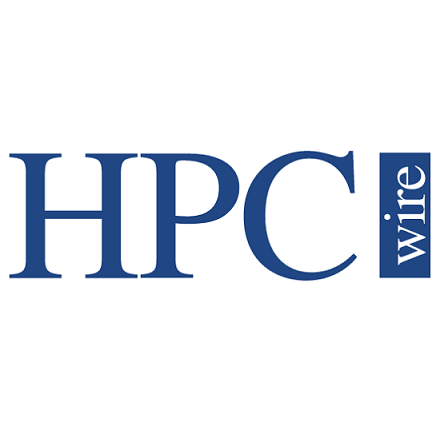
IDC Forecasts 7 Percent Annual Growth for Global HPC Market
July 9, 2013
The global HPC market has recovered from the great recession and is now poised to grow at a compound annual growth rate (CAGR) of 6.8 to 7.8 percent through 2016, with growth at the high end supercomputer market and China leading the way, the research firm IDC said at the recent ISC 2013 event in Germany. Read more…

South African Student HPC Team Rides GPUs to Victory at ISC 2013
June 27, 2013
When an underdog team of undergrads from South Africa arrived in Leipzig, Germany for the 2013 Student Cluster Challenge last week, they had the odds stacked against them. But what the team lacked in experience was more than made up for with intestinal fortitude, not to mention a heavy dose of NVIDIA GPUs. Read more…

Exascale Requires 25x Boost in Energy Efficiency, NVIDIA’s Dally Says
June 24, 2013
While there is a universal desire in the HPC community build the world's exascale system, the achievement will require a major breakthrough in not only chip design and power utilization but programming methods, NVIDIA chief scientist Bill Dally said in a keynote address at ISC 2013 last week in Leipzig, Germany. Read more…

The Top 500 Visualized
June 21, 2013
To wrap up ISC, we wanted to collect some general visualized trends from this year's rankings. In this visual feature, we've provided information on operating systems, key vendors, processor and interconnect technologies and more. While there are a million ways to analyze the... Read more…

China Means Business with Supercomputing Push
June 20, 2013
China is making significant strides towards its goals to use supercomputing as the next big platform to spur economic growth. The country now makes up 13% of the Top 500 (with 51% from the United States). We talk with Inspur's Chief Scientist of HPC Applications about how the system will be used to forward the goals of the national... Read more…

HPC Systems Post Solid Revenue Growth in Q1
June 20, 2013
Worldwide sales of HPC servers perked up by 5.3 percent during the first quarter of 2013, to $2.5 billion, industry watchers at IDC reported last week. The increase was driven by sales of small and midrange HPC systems, as sales of high-end supercomputers declined. Read more…

Cray Cracks Commercial HPC Code
June 20, 2013
During a conversation this week with Cray CEO, Peter Ungaro, we learned that the company has managed to extend its reach into the enterprise HPC market quite dramatically--at least in supercomputing business terms. With steady growth into these markets, however, the focus on hardware versus the software side of certain problems for such users is.... Read more…

My Supercomputer is Bigger Than Yours!
June 18, 2013
Contributing commentator, Andrew Jones, offers a break in the news cycle with an assessment of what the national "size matters" contest means for the U.S. and other nations... Read more…

- Click Here for More Headlines

Whitepaper
Transforming Industrial and Automotive Manufacturing
In this era, expansion in digital infrastructure capacity is inevitable. Parallel to this, climate change consciousness is also rising, making sustainability a mandatory part of the organization’s functioning. As computing workloads such as AI and HPC continue to surge, so does the energy consumption, posing environmental woes. IT departments within organizations have a crucial role in combating this challenge. They can significantly drive sustainable practices by influencing newer technologies and process adoption that aid in mitigating the effects of climate change.
While buying more sustainable IT solutions is an option, partnering with IT solutions providers, such and Lenovo and Intel, who are committed to sustainability and aiding customers in executing sustainability strategies is likely to be more impactful.
Learn how Lenovo and Intel, through their partnership, are strongly positioned to address this need with their innovations driving energy efficiency and environmental stewardship.
Download Now
Sponsored by Lenovo
Whitepaper
How Direct Liquid Cooling Improves Data Center Energy Efficiency
Data centers are experiencing increasing power consumption, space constraints and cooling demands due to the unprecedented computing power required by today’s chips and servers. HVAC cooling systems consume approximately 40% of a data center’s electricity. These systems traditionally use air conditioning, air handling and fans to cool the data center facility and IT equipment, ultimately resulting in high energy consumption and high carbon emissions. Data centers are moving to direct liquid cooled (DLC) systems to improve cooling efficiency thus lowering their PUE, operating expenses (OPEX) and carbon footprint.
This paper describes how CoolIT Systems (CoolIT) meets the need for improved energy efficiency in data centers and includes case studies that show how CoolIT’s DLC solutions improve energy efficiency, increase rack density, lower OPEX, and enable sustainability programs. CoolIT is the global market and innovation leader in scalable DLC solutions for the world’s most demanding computing environments. CoolIT’s end-to-end solutions meet the rising demand in cooling and the rising demand for energy efficiency.
Download Now
Sponsored by CoolIT
Advanced Scale Career Development & Workforce Enhancement Center
Featured Advanced Scale Jobs:
HPCwire Resource Library
HPCwire Product Showcase
© 2024 HPCwire. All Rights Reserved. A Tabor Communications Publication
HPCwire is a registered trademark of Tabor Communications, Inc. Use of this site is governed by our Terms of Use and Privacy Policy.
Reproduction in whole or in part in any form or medium without express written permission of Tabor Communications, Inc. is prohibited.
























